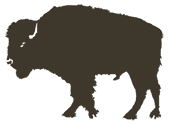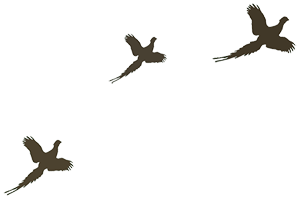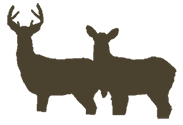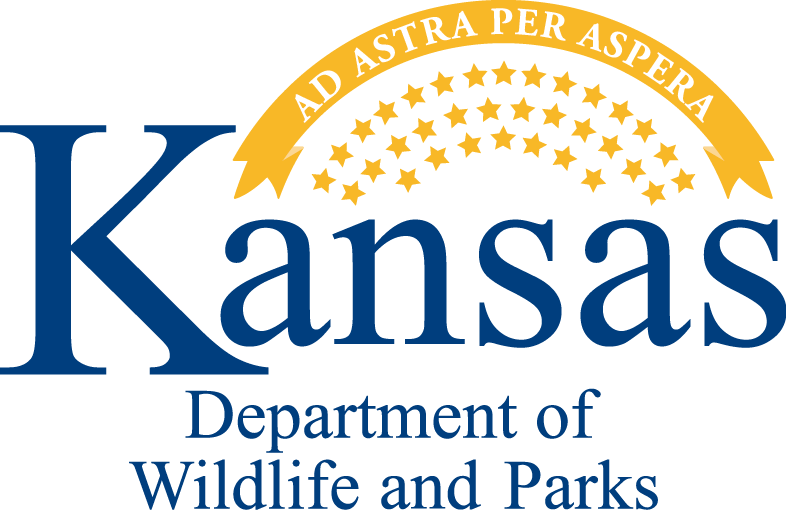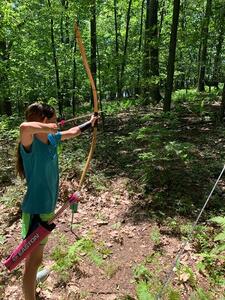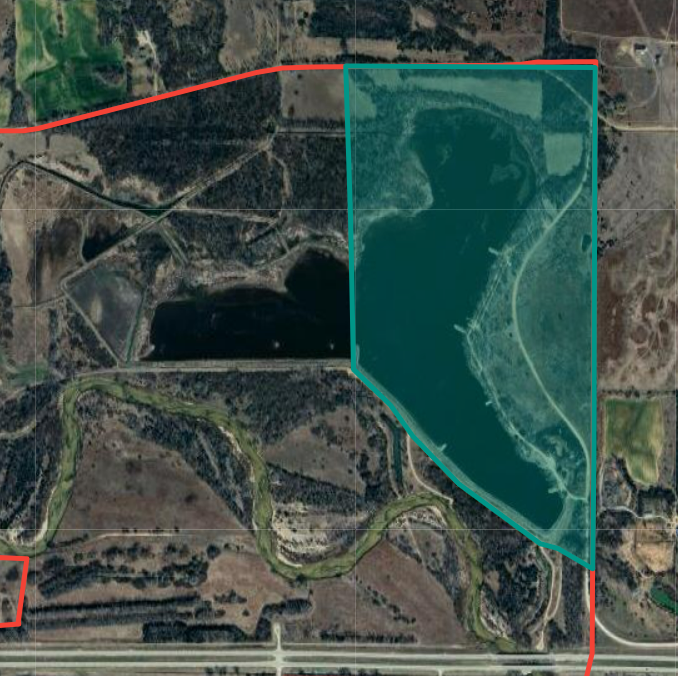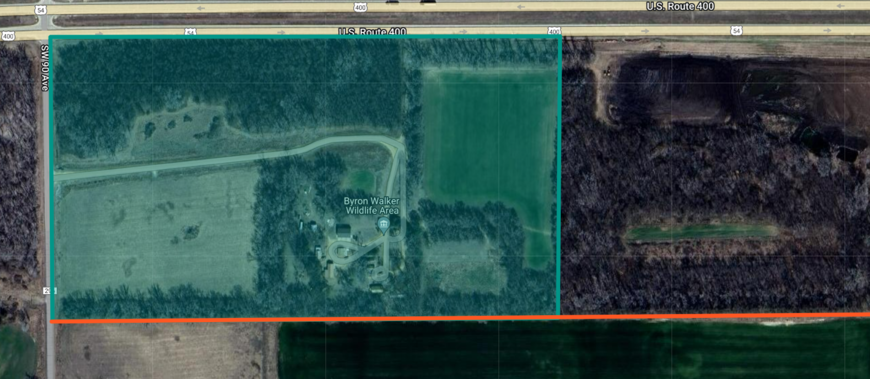Byron Walker Wildlife Area
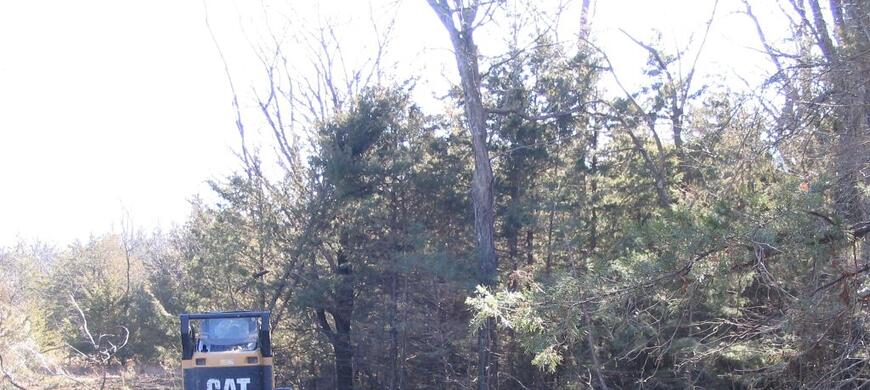
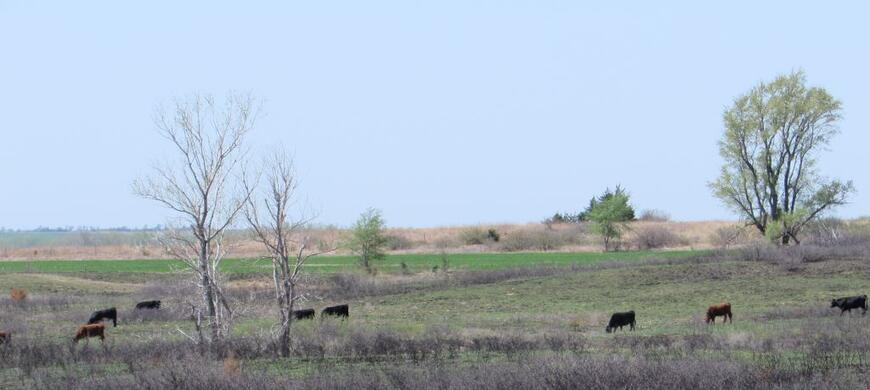
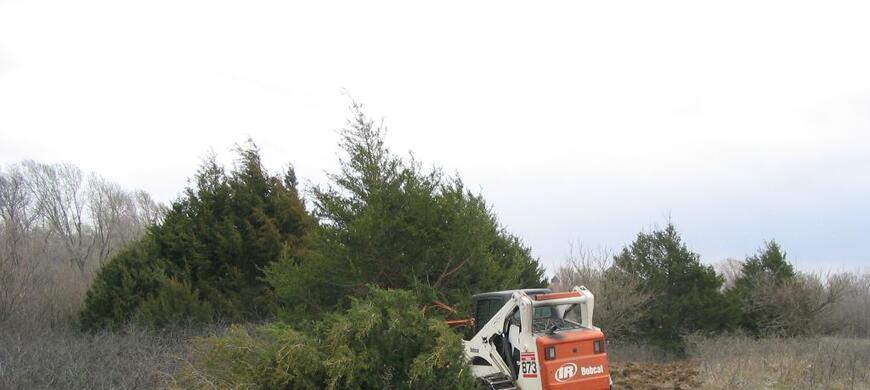

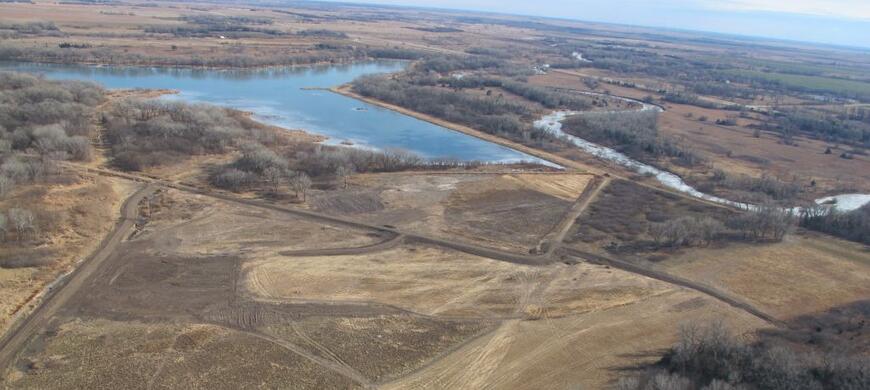
Byron Walker Wildlife Area has many different opportunities to recreate, ranging from camping and fishing at the Kingman State Fishing Lake to hunting a number of game animals through out the diverse habitats found on the area. The lake and surrounding wildlife area are ranked in the top 13 areas for wildlife viewing in all of Kansas.
A campground is located on the east side of the lake, there are 40 sites with picnic tables and fire rings, all sizes of RVs, trailers, and tents are allowed. It is a primitive campground with no hardened sites or hookups, three vault toilets. There is a seven (7) night maximum stay, no permits, passes, or fees required. A pack it in, pack it out policy for trash with no dumpsters available. Please be respectful of your camping neighbors!
A picnic shelter with tables is open for use on the road to the east of the campground. The campground in known as a quiet and comfortable oasis with incredible sunsets reflecting into the lake water.
The area is renowned for being an exceptional wildlife viewing location and the lake is quite picturesque. Bird watchers can build a list of over 100 species on the area, and a wide variety of other wildlife can be seen throughout the various habitat types. The fall and spring seasons see a myriad of migratory species passing through the area. Whether you like waterfowl, perching birds, raptors, furry critters, or reptiles, the area will surprise you with many memorable memories!
An archery practice range is maintained at the headquarters area. Hunters as well as recreational archers can sharpen their skill or check their equipment. 3D shoots are offered by the Southfork Archers club from spring through fall and are open to the public.
Providing for our disabled constituents is a constant part of our plans on all our areas. We periodically get inspected by ADA inspectors to help us meet those needs. After our most recent inspection in 2020, you will see that we are working to that end by providing designated handicap parking pads in several locations at the Byron Walker headquarters as well as Kingman State Fishing Lake. Please help us provide for our handicapped friends by not blocking their limited parking spots.
The diverse habitat on Byron Walker Wildlife Area includes riparian woodlands, native prairie, wetlands and marshes, and cropland which makes the area a great destination for hunting a variety of game species. Most of the prairie habitat is mixed grass prairie that has been enhanced with brush plantings, disked strips, and food plots. The wetlands are managed for waterfowl using moist soil management and millet plantings. Area woodlands are fairly diverse with some walnut and oaks mixed in. A substantial amount of management is directed toward maintaining and improving these habitats each year.
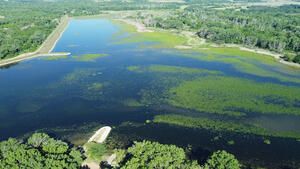
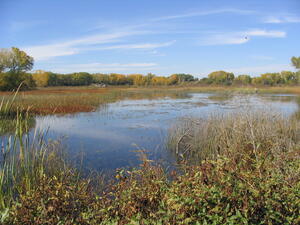
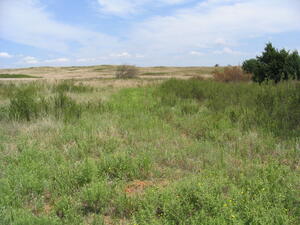
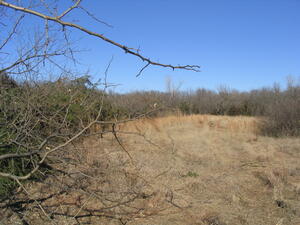
Quail are the primary upland game species on the area, and numbers are typically good. The western 2/3 of the area is probably best due to the quality native prairie habitat found there. If you watch for weed strips, plum thickets and recently burned prairie, your dogs will probably tell you when you are close. Pheasants can be found on the area, but numbers are generally low because of the lack of suitable habitat. They too can be found in the prairie habitats, but look where croplands are available or near wetland habitat for them.
White-tailed deer hunting is very popular on Byron Walker. Numbers are generally good and can be found in every habitat on the area. Choosing areas where you think pressure may be light can help minimize interactions with other hunters and increase your success. Think about pinch points and travel lanes back off of the food as public land deer are more wary than those found on private land. Bowhunters can improve their shooting skills at the archery range locate adjacent to the area headquarters.
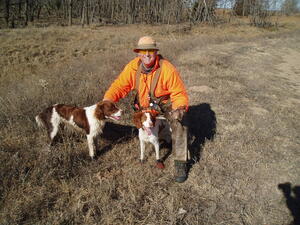
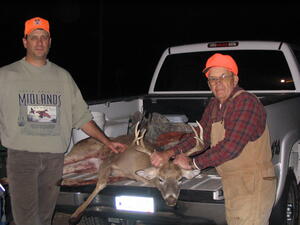
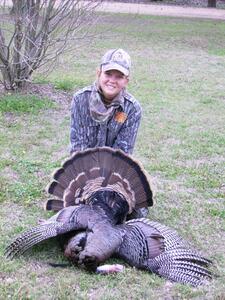
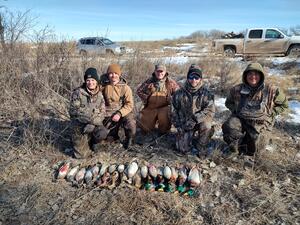
Turkey numbers on the area are decent and success can be had, but you will have to work to bring these wary birds into your setup. The area is best early in the season as hunting pressure frequently forces birds off the area or makes them extremely cautious by mid to late season. The Rio Grande turkeys are not bound to the timber, they are frequently out in the prairie and often use the burned grasslands extensively. Do tread lightly and they will stay longer on the area.
Waterfowl hunting offers some exciting opportunities on the area. The west 1/3 of Kingman State fishing Lake is open to waterfowl hunting, with the remainder of the lake managed as a refuge. (check at top of page to find area map) In addition, eight marshes are located north and west of the lake and five more can be found south of the lake and on the south side of highway 54. The Ninnescah River and a dozen or more ponds on the area are also open to waterfowl hunting. This may sound like a lot of space, but the actual acreage is limited. Please keep your shots close and over the decoys. There is no use wounding and losing birds due to a lack of patience. The area can also be quite crowded on weekends, so respect your neighbors and work together.
The 2012-2014 highway expansion project on highway 54 going through Byron Walker Wildlife Area made some significant changes. Though many of those may be viewed as negative to our users, on the positive side, broken concrete from this project has been used to protect the Kingman State Fishing Lake dam from wave action and burrowing rodents that have plagued the structure since it was built in the early 1930's. Material for this project was donated by KDOT and Dondlinger Construction with a value in excess of $250,000. The material was placed using contracted and agency heavy equipment completing a project that would have cost in excess of $250,000 without the donated material and closer to $50,000 with the donation. The new rip rap extending into the water will provide some quality fish habitat that has been limited in this aging lake. This will improve the fishery significantly for some fish species. Some rip rap material was left over from the dam project and that material was used to build two additional rock fishing piers at Kingman State Lake as well as 2 more at the Pratt Headquarters youth pond. This quarter million-dollar project was used as match in a North American Wetland Conservation Act grant which brought approximately $160,000 federal dollars to the Byron Walker area that was used to upgrade and expand the existing wetlands north and west of the lake as well as south of highway 54 south of the lake. Further, Ducks Unlimited fundraisers were able to solicit $100,000 of donations from Phillips 66 that will also be used to create additional wetland marshes.
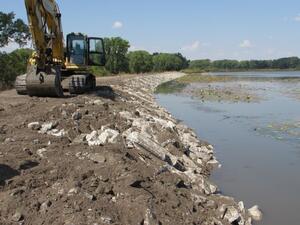
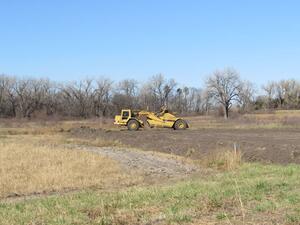
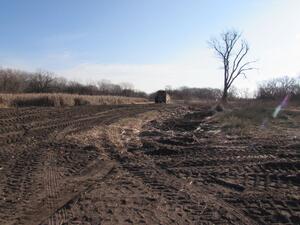
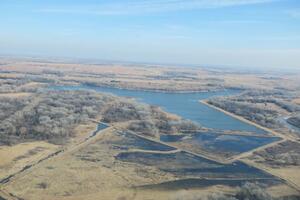
Unfortunately, with the 4-lane upgrade to highway 54, we lost a number of access points along the highway. The new parking lots that we did get are very nice and provide parking for a number of vehicles. Hunters should know that most perimeter gates are long chained in the fall so that hunters can have reasonably easy access through the fence with guns, bows, or dogs. In many places where there are no gates or where cattle grazing may occur during open seasons (turkey), we have provided stiles where hunters can use these steps over the fence to avoid having to cross the barbed wire. However, much of the perimeter is still fenced and hunters must negotiate crossing the fence to gain access. Hunters need to be aware that they have no right to modify our fences in any way. Removing staples and clips, twisting wires together, pulling wires onto post tops, and cutting wires is vandalism and will be prosecuted vigorously. Efforts have been made to make reasonable access for you. Please do not waste the staff's time fixing things that weren't broken instead of working on habitat projects that can increase game populations. If you have a particular access need or are limited in mobility, please contact the manager. Thank You!
New in 2010 we started using a different grazing system on the area. As with any system, it is good to change things up from time to time in order to not select for or against the various habitat components the same way for too long. The new system is modeled after the Oklahoma State University style Patch Burning/Patch Grazing system.
This system utilizes fire to move cattle impacts from unit to unit within a given pasture. Each year approximately 1/8 of the pasture will be burned in March/April. The cattle will graze that unit heavily due to the grass being most nutritious and free from thatch after the burn. Then, in July/August, another 1/8 of the pasture will be burned, moving the cattle from the first burn to the newly burned unit. In successive years additional units will be burned in the same pasture until in 3-4 years the entire pasture has been burned and the cattle impacts have been moved across all of the acreage.
The benefits of this system are many. First, there will not be entire pastures burned at one time, leaving large portions of nesting habitat unusable for 1-2 years. Smaller tracts will be burned, leaving larger nesting components untouched through the nesting season and requiring less staff to conduct these smaller burns. Second, the increased animal impact within the burned units will improve the forb component in that unit for successive years, reducing the need for the disturbance disking that was previously being done. Third, the ungrazed units will have increased cover for other game species and will also have improved fuel when they are burned resulting in improved brush control. Fourth, this system will result in 8 different stages of plant succession within a grazing unit after the first full rotation of 4 years. This should provide improved habitat for deer, turkey, quail, and other grassland wildlife. This change will also allow the staff to spread the burning acres over two burning seasons instead of one, reducing the impacts of weather, staff shortages, and burn bans over time.
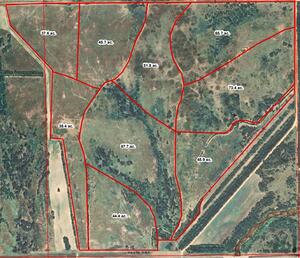
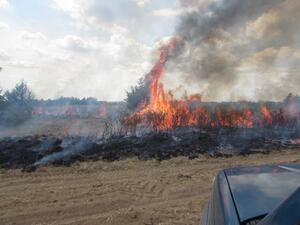
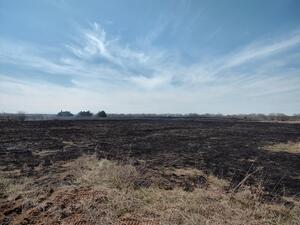
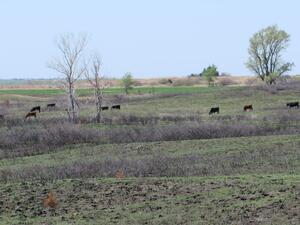
There are also many benefits for the cattle producer with patch burning. First, by late July and early August, cattle are down to grazing forage that is in the 6% protein range. Patch burning in July/August promotes new growth subsequent to the burn that will provide forage with approximately 16%-18% protein, improving cattle gains when they would be slowed otherwise. Second, the patch burning promotes plant diversity, which provides additional nutritious plant species (forbs) often absent in continuous systems. These plants also aid in nutrient cycling in the soil and add nitrogen at higher concentrations than found in traditional grazing systems. Third, for those landowners with Sericea Lespedeza infestations, patch burning sets back this invasive plant and shuts off its chemical defenses, allowing cattle to graze the plant and prevent it from seeding. This is the only method of grazing that has shown the capability to stabilize Sericea populations. Fourth, because growing season burns provided access to high quality forage during the fall months, the patch burn cows do not need any supplement until the first of January each year. This is in contrast to the traditionally managed cows where protein supplement is provided starting the first of November. Fifth, the spring burning season is often shortened by bad weather or burn bans due to dry conditions. The summer burning season is characterized by more stable weather conditions and burns are less volatile due to green growth. Using the patch burning/patch grazing system, landowners can spread their burning operations over two seasons that offer more burning days overall, increasing their ability to accomplish burning over more acres safely. Other benefits of patch burning include: uniform utilization of forage over the entire pasture over a period of years; ease of checking cattle, deferring grazing before or after burning is not required and livestock can be left in the pasture while burning the next patch; forage accumulated in rested patches is a form of grass banking, which is holding forage in reserve for drought years; and better brush control is achieved because fire in rested patches is more intense than in pastures managed traditionally.
Waterfowl hunters planning hunts at Byron Walker Wildlife Area this fall will reap the benefits of our second NAWCA grant that has created two new wetlands adjacent to highway 54 just north and also east of the headquarters. The north project is called the East Oxbow marsh which was completed in May of 2024, adding a new wetland between the Ninnescah River and the highway. The second wetland was completed in August though it will not be flooded until vegetation has been established on the dike. This wetland may be called the headquarters marsh. Both these wetlands are in close proximity of the Ninnescah River, Kingman State Lake, and a collection of several other marshes on the property.

Wetlands are a valuable habitat on Byron Walker, and they have their own unique maintenance requirements. Frequently, beaver and muskrats can cause problems by digging dens in the dams and dikes that impound the water. The repair cost of fixing these dikes and dams can add up quickly. To be a bit more proactive, rip rap was placed on 3 of the area pond dams and one marsh dike where Mr. Beaver has made a regular pest of himself. The concrete rubble (rip rap) should deter these rodents and reduce future costs maintaining these wetlands.
In 2024 we have worked on 2 additional pond dams that were in need of maintenance. The first is located in the CRP on the 2022 acquisition. We replaced the water control structure and tube through the dam, re-shaped the dam, and excavated about 4-5 feet of mud out of the basin. Staff built an electric fence to protect the dam from cattle while grass is established and the area below the dam where we will be building 3 more marshes in the next couple of years. This pond will be used as a water storage basin held to flood the 3 new wetlands once they are constructed. The second is located north of highway 54 and is more of a cattle water impoundment. It was also re-shaped and the dirt work has been protected by an electric fence. This pond works to support our grassland management, allowing cattle grazing on the adjoining acres. Trees are also being removed around the pond to reduce competition for water.
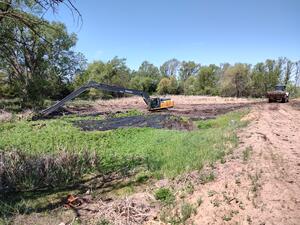
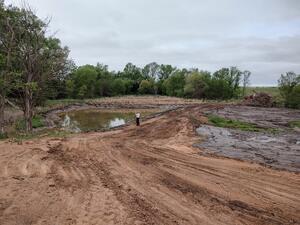
CRP Marsh, clean out
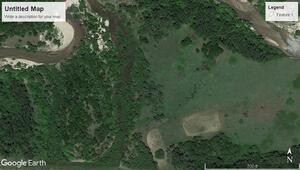
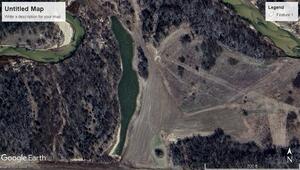
East Oxbow Marsh, pre and post construction
Making the best use of the water available to fill Kingman State Fishing Lake (KMSL) and the marshes that surround it is a regular concern. In the 32 years I have been managing KMSL, keeping the lake full through the summer months as well as filling the marshes come fall has gotten to be a bigger problem. It seems our water inflows have gradually lessened to the point that most Augusts the lake tends to be at least 1 foot low. The marshes have also become more difficult to fill early in the fall as inflows slow. The two canals that aide in providing water to KMSL periodically fill with sand and silt and must be cleaned out to get the water moved into the desired location more efficiently.
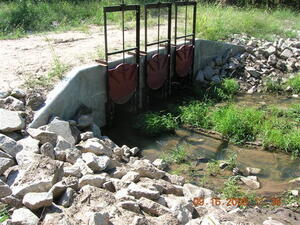
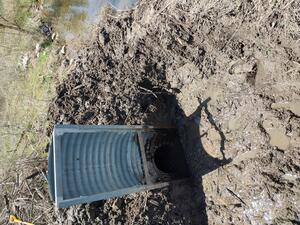
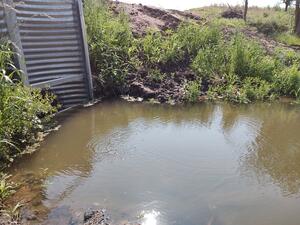
Different water control structures in use on BWWA. Top right picture shows how beavers can impact our wet soil management by damming up our structures.
2020 - Will be long remembered for the Covid 19 virus, and the Byron Walker Wildlife Area was not immune to its effects. Covid precautions led to a cancellation of all spring burning activities. Six summer burns were completed, amounting to 360 total acres for the year. Due to a project in 2019, a limited walnut log harvest was conducted in 2020 with the income being used to update equipment on the area. Eleven marshes were dewatered and seeded to millet this summer and going into the waterfowl season those marshes are proving very attractive. Phillips 66 donated money to the Byron Walker area for wetland construction and I developed plans for 5 new marshes for consideration. Those funds were entered into a NAWCA grant to get matched money from the federal government program, and we will try to get as many of them completed as the money will fund. Waterfowl hunting has gotten so popular on the area that the constant disturbance is forcing waterfowl to use surrounding private waters more than they use our lake and marshes. Five additional marshes/wetlands are planned to be built in coming years to aid in providing more space for both waterfowl and waterfowl hunters. Modifications to regulations are also being discussed that would give migrating waterfowl more refuge in time, but those changes have not been initiated yet.
Our tree cutting contractor worked on Elm and Locust cutting in the western unit of pasture #6. This removal should greatly reduce the number of seedlings produced that would have to be dealt with in the future. I also worked on plans for another pasture unit (#8) that would put 320 acres of native prairie under grazing, to improve the plant diversity and structure, improving its productivity and usefulness for bobwhite, deer, and turkey.
2021 - Project priorities were able to be shifted to a more habitat focus. We had a good summer burn season and got a lot of woody vegetation set back and forbs promoted. As always, we hope the next burn season gives up enough days to meet our goals.
We had our heavy equipment contractor come in and clean the silt deposits out of two canals that feed the lake and marshes and raise the dike on one of those to better contain inflows. We added rip rap to 3 pond dams and one marsh dike on the area to help prevent damage from beavers and muskrats that have been a problem. The new NAWCA grant application was proposed and approved. Kingman's NRCS staff (Mike and Pam) found us a substantial amount of completed projects that we could use the value of for match for this grant and they deserve much of the credit for its size and value!
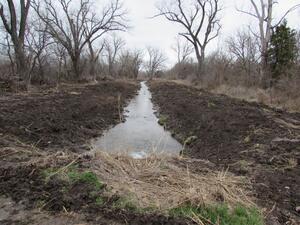
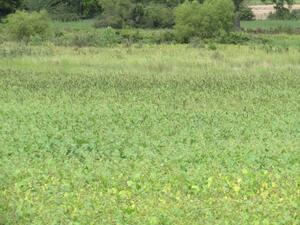
Many of our existing wetlands were planted to Japanese millet this summer and hunters should see waterfowl utilizing those resources. More recently, staff mulched, mowed, and cut the encroaching woody species in the old bison pen marshes with plans to follow up with chemical treatments to return those acres to more of a wetland/grassland community. Staff also hosted the Kansas Youth Range Camp field tour on Byron Walker, giving many of Kansas' young grassland managers an opportunity to see a patch burn/patch grazing range management program at work. Thanks go out to Keith Murrow for joining in this effort and giving wildlife management lessons in the classroom portion of the camp. Channel Catfish were again stocked in 4 of the area ponds and should provide many hours of angling pleasure to area fishermen.
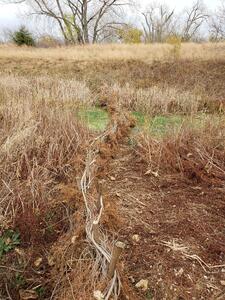
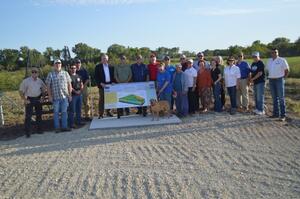
Eagle Scout candidate, Chris Wyant, brought his group of supporters to the area and built 2 beaver analogs on one of the major springs on the area. This should create more and improve wetland habitat, and also provide more huntable water for BWWA waterfowlers. A wetland ecosystem diorama memorial was dedicated in September remembering Delmer Schrag (long time Byron Walker Wildlife Area employee) and Lee Queal (long time KDWPT and DU employee). These gentlemen both dedicated much of their life to improving the wildlife habitats in Kansas and on Byron Walker Wildlife Area.
2022 - This spring started dry and windy, so much so that we accomplished no burns in either the spring or summer burn seasons. We did complete the purchase of 493 acres of land to add to Byron Walker Wildlife Area, a process that took just over 6 years to complete. We developed plans for 5 marshes to build in the new NAWCA project, but the covid era raised prices considerably so that we may only be able to build 2 with that funding. We removed trees in the footprint of the marsh that is to be built south of highway 54 with the drought helping with that. We did bring in a tree cutting contractor to help with invasive tree removal in parts of pastures 1-4 and the CRP grass on the newly purchased ground. Staff girdled trees and cut understory cedar in the Sears pasture and cleared trees for fence construction in the new pasture 8 south of the lake. We planted millet in 7 marshes and on 5 ponds preparing for the fall migration. We pushed out several large blackberry thickets and treated them, so they didn’t recur. Cattails were our target with dry marshes, and we got them sprayed in several marshes as well as the north shore of the lake. A 3 species cover crop was planted in all the food plots on BWWA for deer and turkey forage.
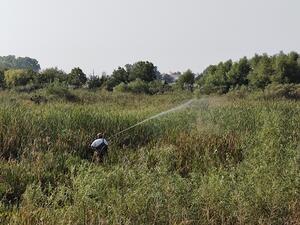
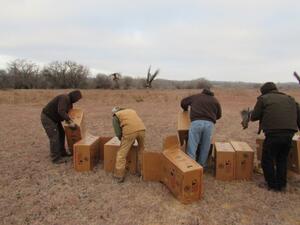
Almost 30 turkey were received from a problem flock in Wichita and stocked on the area. Our annual chemical applications were directed at Old World Bluestem, Johnsongrass, Sericea Lespedeza, and Reed Canary grass as well as applications for elm and locust as well.
2023 - The turning of the calendar found us right where we ended the year before, trapped in a third year of drought. Once again, we failed to have legal burn weather and the only acres that were burned were the result of a wildfire March 20th that burned about 150 acres. We brought in a tree cutting contractor to remove the tree rows damaged by that wildfire and put him on cedars, elms, and locust in pastures 1, 2, and 5 as well as the new CRP and in the grass east of the lake. We again sprayed Old World Bluestem, Phragmites, Sericea Lespedeza, and Reed Canary with the drought allowing us to get to some places that are usually impassible. Staff spent a good deal of time removing the failing fences on the new acres and a contractor replaced those with new 5-wire barbed fencing.
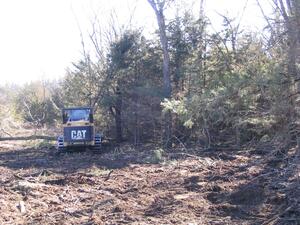
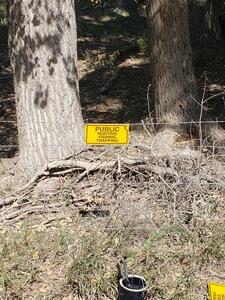
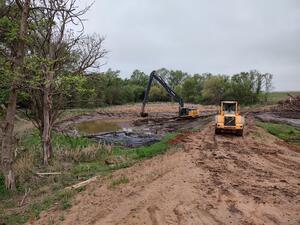
We placed public land signs along the border so hunters could find the boundaries and respect our neighbors. We adjusted our grazing rate down by approximately 25% to allow for the expected reduced growth in the drought, but mid-summer rains gave us a boost in production and left us with very good cover. Staff burned the log piles made in preparation for the new marsh south of the highway and construction started on both new wetlands in January. We also brought in a heavy equipment contractor to replace the water control structure on the CRP pond, repaired the dam, and removed several feet of the silt in that pond to give it additional storage volume. We did drain and kill out Kingman State Lake this summer, drought has slowed refilling it so restocking is expected to start in March instead of this September.
2024 - With the new year finding us still in the persistent 3-year drought, we have plenty of limitations we have to consider in our management. We prepared almost 1300 acres for possible spring burns hoping the drought would subside and improved burn conditions would occur. Unfortunately, conditions have not changed in time to get all or most of those acres burned. Staff did get 3 burns accomplished that add up to 196 acres for the spring season.
A new cropping contract was bid out for the cropland acres on the 2022 acquisition. The plan is to turn the 150 acre crop field into a 4 field rotation using no-till farming methods and a mixture of crops and cover crops that will focus on benefitting pheasants. These same crops will also benefit deer, turkey, bobwhite, cottontail, and waterfowl.
Grazing and burning will also be initiated on the 2022 purchased acres, these acres will be rolled into our existing grazing management system.
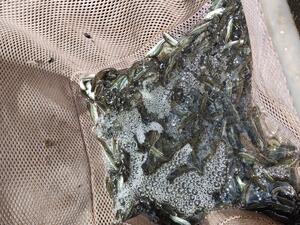
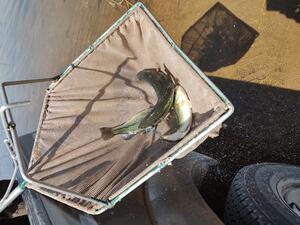
Largemouth bass stocked into Kingman State Lake
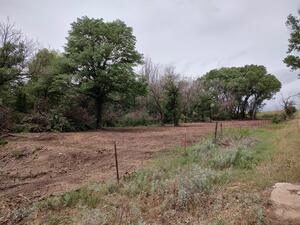
Tree cutting project in Pasture 1
Our staff assisted the fisheries division with stocking Kingman State Lake in April and May. Stocked species include largemouth bass, channel catfish, and bluegill, with varying amounts and sizes of each. Ducks Unlimited stepped up and provided funding for an extensive invasive tree control project. The sites were selected to benefit existing wetlands by removing Siberian Elm, Black and Honey Locust, and Eastern Red-cedar. Our highest costs managing habitat on Byron Walker are associated with controlling these invasive plants. Getting this large of a project completed in 1 year should reduce those costs for decades to come.
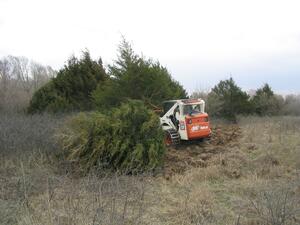
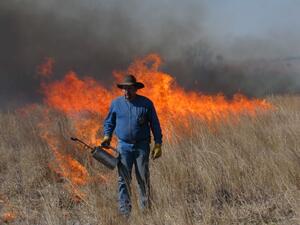
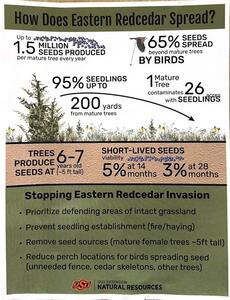
Feral cedars (cedars that have sprouted and are growing wild) are a serious problem across Kansas. Byron Walker Wildlife Area has the same problem. These trees often sprout in disturbed places or under existing timber where they slowly grow and increase in density and distribution. For a time, they are good cover for wildlife. However, too much of anything can be bad and this is the case with cedars. From a wildlife standpoint, when the cedars are crowding out other beneficial cover and food types and closing in on 100% ground cover, they have become detrimental to wildlife. In addition to negatively affecting wildlife, these dense stands of cedars are a refuge to nest predators, pose a fire hazard, use valuable groundwater, and produce tons of irritating pollen. In 2010, working with a Kansas Forest Service grant, the staff at Byron Walker Wildlife Area are cutting understory cedar trees that have become a fire threat as well as a problem for wildlife production. Cedars close to highway 54, that would likely aid a wildfire jumping the highway were being cut and stacked. The stacks will be allowed to dry and drop their leaves for a couple of years, then burned or chipped. The resulting habitat may look thin for a time, but it will eventually fill in with more beneficial plants that will provide better and more sustainable habitat for our wildlife populations. Problem cedars will also be removed outside of the Forest Service project as a normal habitat management activity. Significant control is achieved as a result of our prescribed burning program. An annual goal of over 1000 acres burned helps keep our habitats in more productive successional stages and also controls young cedar sprouts before they get too big for an average fire to kill.
Our invasive tree control efforts continued in 2020 and 2021. Contractors cut trees in the two western-most sections on Byron Walker, concentrating efforts on removing invasive Honey Locust, Siberian Elm, and Eastern Red Cedar. They cut both young trees invading our grasslands as well as the adult trees that were the seed source of those invaders. This should create improved structure in the native timber left standing as well as reduce the spread of these species in those sections. We plan to continue this work using both contracted operators and agency staff and equipment with a goal of getting these species controlled on Byron Walker.
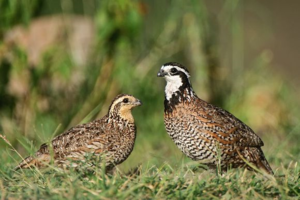
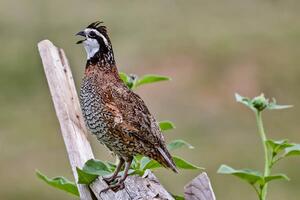
Another year has come and gone and soon another quail season with it. The W-2's have arrived, and it gets a guy thinking if a refund is coming or if Uncle Sam is going to ask for more. Well, quail managers are also doing the math for the season, trying to decide if good investments were made, if sufficient savings have been held back. It's all about the math!
I'm sure by now that you are wondering just what I am talking about. It all boils down to bird population math. I drove by a pickup on the area today 3 times trying to catch up with the hunters that occupied it. Never happened to get them tracked down, but it got me to thinking about the effects of their trip. Many times, this season we have all enjoyed the pictures and videos of successful hunts and the pile of birds on the tailgate, dog box, farm implement, or stone post. Unfortunately, too many of us use the size of that pile as the primary measurement of that success. Problems arrive when our success this season affects our productivity for next season. When you talk about public land, all too often the math doesn't add up.
In general, quail populations can be harvested to the tune of 40-60% without affecting next year's population. Where your land falls within that range is affected my many variables. However, as we get into late season, the birds we harvest may well be costing us population potential next season. Early in the season our harvest is often considered compensatory. That means that the birds we are taking home would have not made it to next years' breeding season anyway. Later in the season the math changes. Once that last compensatory bird is harvested, we're in the red. Every bird after that bird may well remove an entire covey from next season's population. This is called additive mortality.
On public land I think we're into additive mortality sometime late in November or early December most years. These late season hunts, though satisfying to the soul, may well deepen the deficit of next season's bird numbers. It's hard on wildlife managers to have the habitat perfect for quail production, have weather that is conducive for production, yet not be able to achieve a robust population because not enough breeding birds are there to fill that habitat. Quail are density dependent breeders, producing more or larger broods in response to low populations, but they may well not be able to overcome such a large deficit.
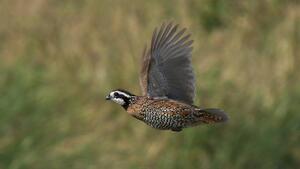
The same conditions might occur on private land too. This can happen from a single group making too many trips and taking too many birds, or it could be from a number of groups that don't account for the other groups' harvest. On some well managed private holdings, birds are estimated preseason, and a number is set for the annual harvest. Once that number has been taken, the season is closed. This is much harder to do in a public ground setting.
WIHA is susceptible too, but often isn't held to the same parameters. Why? Many of the WIHA tracts are smaller and the population is buffered by more lightly hunted adjoining ground. Quail, by nature, are not the best public land birds. They are much less mobile than pheasants and, being "gentleman bob", are often more susceptible to the gun. Add to that the protection we give pheasant hens and their more polygamous nature, and pheasants are a much better bird for public situations.
There are many ways sportsmen try to control their harvest. The best is mentioned above and involves setting a harvest goal based on population surveys and sticking to it. Another is when hunters often don't shoot into smaller coveys. This is often most successful in preventing environmental and predatory death within that day, not overharvest. Again, math is in order. Suppose you have a population of 36 quail in 3-12 bird coveys. If you were to never shoot into a covey of 8 or less birds, it is feasible with daily recombination of coveys that you would end the season with only one covey of 8 birds. That's a harvest of almost 78%.
Tax season is upon us! Time to take stock of where we are and where we want to be. Hopefully, we didn't over-spend our limited quail budget this season and saved a nest-egg for the coming year. So too, it is time to plan investments like prescribed burns, disked strips, grazing, and other projects that might stack the deck for a successful breeding season to come.
In the past 40 years, I have been privileged to work on over a dozen wildlife areas in Kansas. In that time, I have talked to literally thousands of hunters and anglers. With that many discussions, many trends tend to show up. One that occurs regularly is that of unrealistic expectations. Sportsmen come to our public wildlife areas to enjoy their passion- hunting. All too frequently they come with expectations that the area they have chosen to hunt can’t provide. Many call before planning a trip with those types of expectations and are disappointed by the forecast they receive. Still others arrive to hunt for species that may not even exist on the area or find the population is so low that their expectations will never be met. Almost no wildlife area holds every game species indigenous to Kansas. Game species are often regional, and many are adapted to specific habitats that not every wildlife area possesses. However, many sportsmen flock to areas with signs that read: Public Hunting, Wildlife Area, or Hunting/Fishing/Furharvesting, and expect all species, full bags, and trophy class animals. Can these expectations be fulfilled? Sometimes they can, but often they cannot for a variety of reasons.
Let’s discuss the wildlife areas themselves. Many Kansas wildlife areas are centered on riparian corridors. The habitat on these wildlife areas lend themselves to woodlands and the associated transitional habitats between the woodlands and the surrounding upland habitats. The quality of these woodlands also varies with better mast producing timber found in some areas and lower quality tree species in others. Even the age of the woodlands affects their capability to produce game. Many wildlife areas also have croplands. These may be planted in a variety of agricultural crops ranging from forage crops, cereal grains, and row crops; all managed to produce or attract game. The quality of the cropland and its capabilities also varies from area to area. Some areas have the best cropland in the county, others the poorest. Knowing what the area can produce weighs into what your expectations should be. Many wildlife areas also offer a variety of upland habitat types that may include grasslands, shrublands, or other habitat types that will support their own wildlife communities. Visitors must know what those habitat types in this specific part of the state are able to support in order to judge what their expectations should be when planning a hunt. Another habitat type found on many of our wildlife areas is wetlands. Wetlands are managed for waterfowl attraction and often support “bonus” species that add to the attractiveness of these habitats. Wetlands vary in their ability to attract waterfowl due to their size, location, available water, and food availability. Some wetlands are filled by pumping ground water; others are filled by natural surface flows.
Management also has a significant impact on whether a sportsman’s expectations may be met. However, even the best management cannot change what an area is capable of producing beyond a certain point. Management on Kansas Wildlife Areas may include timber stand improvement, prescribed fire, cropping, disking, planting, chemical applications, mowing, roller-chopping, brush control, grazing, and even harvesting. A Wildlife Area Manager has responsibility for making management decisions on each wildlife area and his/her decisions are generally framed by the capability of the habitats and location of the wildlife area. A single manager may control 4,000 to 20,000 acres. Their ability to manage those acres is affected by the manpower, budget, time, and equipment available to them. Often, weather events affect their capability to manage an area. Frequently decisions must be made as competing demands on their time limit what techniques may be used, how often, and to what extent. All of these managers also have responsibilities like administration, wildlife surveys, maintenance, construction, law enforcement, public relations, and training. I’m sure there is not a manager in the State of Kansas that has too much time on their hands. Management goes on year-round on wildlife areas and, if you hunt public land often enough; you will sooner-or-later have a hunt disturbed by management activities.
First, when you hunt a public hunting area in Kansas, the first thing to remember is it is PUBLIC! You will generally not have the area to yourself, and you will have your hunt affected by other hunters in the field. Sometimes this will be accidental and will be resolved respectfully, other times it will not. Everyone should be respectful of the other users and do their best to not negatively affect each other. However, it is inevitable that interactions will occur, and your expectations may not be met due to competing hunters’ activity. Another perspective on this “public” aspect is that the very nature of the pressure put on game populations on public areas is much higher than that associated with private land and one can expect that game populations will frequently be below the carrying capacity of the habitat due to heavy annual harvest. Further, the age structure of many species will be reduced due to that heavy hunting pressure and trophy animals may be rare. Animals just don’t get to grow to the age needed to acquire trophy class.
Secondly, you need to know, before going to a wildlife area, what its wildlife production capabilities are. It will do you no good to hunt a wildlife area for a species that doesn’t occur there. You can do this by studying the habitat, distribution, and density of the wildlife species you intend to hunt and its availability on the wildlife area you intend to hunt. You can also call the local wildlife manager and ask what your expectations should be for that game species on his/her area and what part of the area is best targeted for that species. You might also ask if there are areas that would be best avoided due to management activities going on or traditional heavy hunter use. Third, remember that all of the non-migratory species of game are a finite population locally and your expectations later in the season may need to be lower than what they were on opening day. As populations dwindle, game contacts will become fewer and success rates will decline. When you look at a public wildlife area, it is often a good idea to understand what habitat exists on adjoining private land. Wildlife do move back and forth on and off the public land and sometimes you may be able to time your hunt to correspond with those animals being on the area vs. when they are off. This applies to waterfowl, deer, turkey, and upland game among others. On some areas, game moves off the area during periods of high pressure only to move back on later in the season presenting good opportunities for harvest after the opening day pressure has passed.
In summation, many of our public hunting areas in Kansas provide quality opportunity for hunting recreation. However, they are limited in some ways as well. Do your homework before leaving on your hunting trip and you can expect better results than if you had arrived uninformed. If you arrive with reasonable expectation, you will rarely be disappointed in the eventual results! Finally, bring a kid! Your enjoyment will be multiplied if you are providing a bunch of “FIRSTS” to a new hunting buddy!!!
Manager: Troy Smith,
Phone: (620)532-3242
The Kansas Department of Wildlife and Parks Commission approved new regulations relating to hunting on public lands. Designed to provide hunters with equal opportunities on limited public lands, the following regulations have been enacted:
- Baiting, and hunting over bait is now illegal on public lands. Bait is considered any grain, fruit, vegetable, nut, hay, salt, sorghum, feed, or other food or mineral capable of attracting wildlife. Liquid scents and sprays are not considered bait.
- Only two portable blinds or tree stands are allowed per hunter on public lands.
- Portable blinds and tree stands must be labeled with the owner’s name and address or KDWP number.
- Portable blinds may not be left unattended overnight on public lands.
- Decoys may not be left unattended overnight on public lands.
- Commercial guiding is prohibited on public lands and WIHA!
- There is no fall turkey season in 2023.
- Camping at our state fishing lake is now limited to 7 days. Must leave the area for 5 days before returning to camp again.
- Trail cameras are also prohibited on public lands.
- Electric or gas powered bicycles are NOT legal on or off-road on Wildlife Areas or WIHA.
There has been a new position funded at the Byron Walker Wildlife Area. In a partnership between Pheasants Forever and KDWP, a new Habitat Specialist has been brought in to help complete some more in-depth, habitat focused projects. There are several positions like this across the state and now it will benefit the Byron Walker Wildlife Area also!
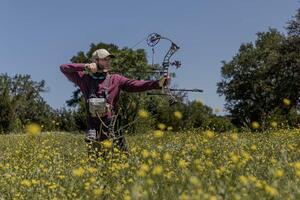
My name is Steve Carnduff and I’m excited to step into the position as the new Habitat Specialist for the Byron Walker Wildlife Area. My professional career began after graduating in 2016 from SUNY Environmental Science and Forestry in central NY. Since that time, I have taken many seasonal positions around the country as a wildlife technician working with different species. Several of the jobs have been focused on avian surveys, some of which were endangered species or recently delisted species. I’ve worked to reintroduce Chinook salmon in the San Joaquin River in CA; assisted a PhD candidate with spotted skunk research in SD; and feral hog management on a military base in TX. I’ve also held two positions at environmental consulting companies, mostly performing regulation compliance, environmental health and safety, and hazardous material regulation compliance. Beginning this position at Byron Walker has introduced me to more of the management side of wildlife work, where most of my previous experience has been research driven and data focused.
Almost every time I have moved to a new job I needed to learn the area, all the wildlife and native plants in the ecosystem, invasive species, unique job difficulties, along with many other new things; and coming to south-central Kansas was no different. I’ve learned about the native plants and animals, the many invasive species that cause problems on BWWA, along with those plant species that benefit quail, pheasants, and other wildlife. The experience I bring with me along with new skills and techniques acquired here will help us at Byron Walker to accomplish our wildlife management goals.
These goals will be achieved mainly through habitat improvement and management projects. Since arriving in August, we have tackled many projects already, but as always there’s still so much more to be done. Projects include timber stand improvement, through invasive woody plant removal, where Siberian Elm, Eastern Red Cedar, and Honey Locust are the main culprits. Invasive species are controlled, with chemical applications on herbaceous plants like Old World Bluestem, or Sericea Lespedeza. These and other invasives must be controlled to maintain great prairie habitat for wildlife. We will also use fire as a management tool, this is done through planned, prescribed burns. Fire is used in tandem with a rotational cattle grazing strategy. This combination of techniques achieves the natural cycle of prairie ecosystem.
The habitat improvement projects mentioned above along with several other techniques are what will be used to increase the habitat quality for wildlife and improve hunting opportunities. Now that I have many of these skills under my belt I’m confident we can safely complete many of these projects and facilitate others to help accomplish our habitat goals at Byron Walker.
Drones, also known as unmanned aircraft system (UAS), have become popular in recent years. They are an excellent way to accomplish a variety of work and recreation tasks. However, there are places that they are prohibited. Our public wildlife areas are one of those places! Under Kansas regulations (KAR 115-8-13), the use of drones over KDWP lands is prohibited except in specific UAS areas located in some state parks.
There seems to be some confusion concerning refuges and how they need to be treated. There are two refuges on Byron Walker, one encompassing the eastern 2/3 of the lake, and one surrounding the headquarters.
New in 2019 the refuge surrounding the headquarters has been upgraded to "Refuge Area, Closed to All Activities." At the headquarters, hunters cannot park inside the refuge and then walk through the refuge to initiate a hunt outside the refuge. That means that sportsmen using Byron Walker cannot enter into these refuges for any purpose associated with hunting, this can include scouting, driving, setting stands, or even blood trailing. Further, with the new designation being closed to all activities, activities like mushroom hunting, bird watching, hiking, and training dogs are also prohibited.

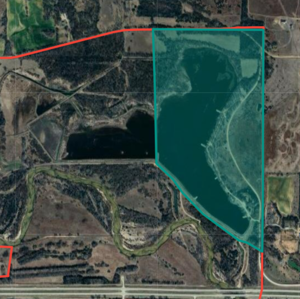
Headquarters Refuge Lake Refuge
The refuge on the east portion of the lake is designated as "No Hunting" however other activities are allowed. Camping within the designated campsites are located within this refuge, other activities can include fishing, hiking/exercising, birding, mushroom hunting, etc. These are wildlife refuges, so all wildlife residing in them are protected. Further, all wildlife residing within those refuges must not be disturbed or induced to leave the refuge. This can be most problematic on the lake where the boat ramps are located in the refuge, and one must travel through the refuge to reach the hunting area. This can be mitigated by avoiding waterfowl until you have passed out of the refuge. Further, giving the refuge a reasonable buffer while you hunt will help protect against wounded game making it into the refuge and creating a dilemma for the hunter as to whether to pursue it. Hunters need to understand that a refuge violation can lead to fines, jail time, loss of equipment and game, and revocation of licenses or hunting privileges. If you have questions about our refuges, please call the headquarters and talk to the manager at 620-532-3242.
Each year Troy Smith hires 3-5 seasonal employees to help with habitat, construction, maintenance, and other work on the area. Smith tries to get individuals either in the wildlife program in college or having graduated with a degree in wildlife. Employees gain valuable experience that will flesh out their resume's once they have a degree in hand. This experience may include prescribed burning, food plot establishment, moist soil management, range management, exotic plant removal, noxious weed spraying, water-level management, pest trapping, electrofishing, fish sampling, and a variety of necessary maintenance duties. This experience is invaluable in interviews. It also helps you understand how many of the topics you study in college relate to actual work in the field. Having served on several interview panels myself, it is often easy to determine which applicants have "in field" experience and understand the specific management direction of the Public Lands Division. If you are now in college or have your degree in hand but need this kind of experience, call the Byron Walker Wildlife Area office and see if there is a job waiting for you!
After our successful completion of Prairie NAWCA II (North American Wetland Conservation Act grant) project in 2019, we planned additional wetland development. I worked up plans for 5 potential new marshes/wetlands to build. It became apparent that more funds would be needed to accomplish those projects. I approached Mike Clover, District Conservationist for the NRCS in Kingman County and county Ducks Unlimited President, to ask if he had knowledge of any habitat projects completed in the county in the past 2 years. Between pond construction projects and grass plantings, he, and Pam Stasa (Conservation District Manager) came up with $120,000 worth of completed projects that we could use as match in a new NAWCA grant proposal. We have received official word that the application was accepted as part of Kansas Prairie Wetlands 8.
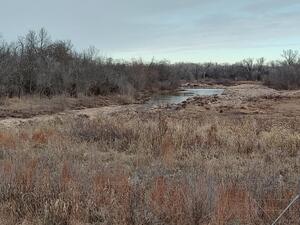
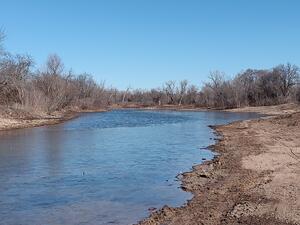
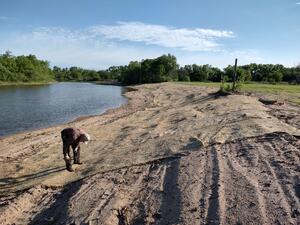
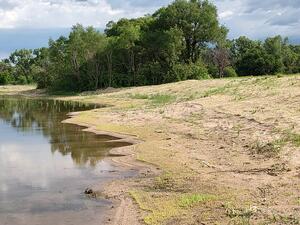
East Oxbow Marsh progression: contractors cleared trees and began digging, digging completed, planted native vegetation and laid erosion fabric on slope, new growth coming up through fabric and long the waters edge.
Update: Due to increased costs, the NAWCA will now only work on 2 of the original 5 wetlands. Work started on these wetlands December 10, 2023. The East Oxbow Marsh dirt work was completed February 9, 2024. The Youth Marsh dirt work has been suspended temporarily due to wet conditions and will restart later this summer with completion scheduled for September 30, 2024. The Phillips 66 money will now be put into a Wetland Grant and used to complete 3 wetlands on the 493 new acres purchased in 2022.
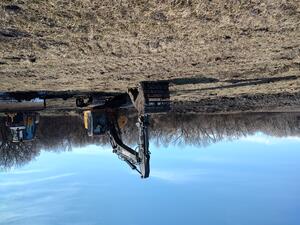
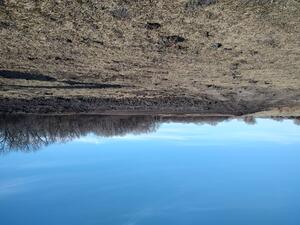
Youth March construction, work paused due to muddy conditions; work will resume in late summer when ground dries.
Our invasive tree control efforts have continued since 2020. Contractors cut trees in the two western-most sections on Byron Walker, concentrating efforts on removing invasive Honey Locust, Siberian Elm, and Eastern Red Cedar. They cut both young trees invading our grasslands as well as the adult trees that were the seed source of those invaders. This should create improved structure in the native timber left standing as well as reduce the spread of these species in those sections. We plan to continue this work using both contracted operators and agency staff and equipment with a goal of getting these species controlled on Byron Walker.
Update: Ducks Unlimited contacted me earlier this spring and gave us a grant for tree cutting in support of our existing wetlands. Eight sites were selected and work began March 11, 2024. Again, the same invasive tree species are being targeted with the hope of terminating the seed source on agency property and improving the hydrology by eliminating the competing plants. Overall some 500 acres stand to be improved if all 8 tracts are completed.
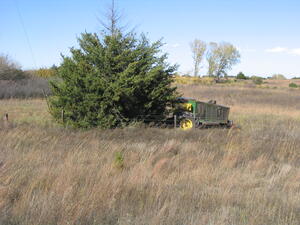
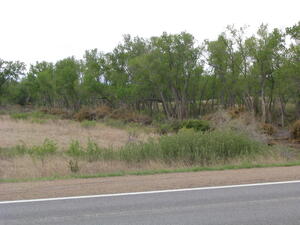
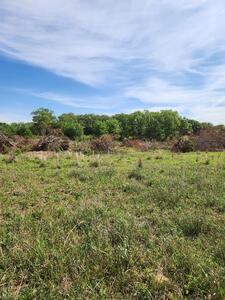
The South Fork Archers will hold their 3D shoots with an 8:00-9:00 a.m. trickle start.
Archery shoots by the South Fork Archery Club:
Mar 9 – Fun Shoot
April 13 – String shoot
May 11 – 3D Shoot
June 8 - 3D Shoot
July 13 – 3D Shoot
Aug 10 – 3D Shoot
Sept 14 - 3D Shoot
All shoots have a trickle start from 8:00 to 9:00 a.m. Concessions will be available. No Crossbows. No Alcohol on State Grounds.
Jayhawk Retriever Club: Hunt test scheduled September 15-17 on private ground.
Special permits that were once required for hunters to hunt Byron Walker Wildlife Area are no longer required!
- Baiting for any purpose other than furharvesting, is prohibited on public lands and Walk-in Hunting Access (WIHA).
- Use of trail or game cameras is prohibited on all public lands and Walk-in Hunting Access (WIHA).
- Only two (2) tree stands may be set per person.
- Labeled with name and address, or KDWP #
- Can be set out two weeks prior to season.
- Must be removed by two weeks post-season.
- Portable blinds must not be left out overnight.
- Target shooting only in designated shooting ranges (Only archery on Byron Walker Wildlife Area).
- Decoys may not be left out in field.
Law enforcement officers may request to check hunting licenses and bag limits. Hunters and fishermen/women must immediately produce and allow inspection of this information.
There are two refuges located on the Byron Walker Wildlife Area.
One refuge is maintained on the eastern two-thirds of Kingman State Fishing Lake, including land north of the lake to 10th street and the campground area east of the lake. You may fish within the refuge on the east side of the lake, however no hunting is allowed.
The second refuge surrounds the area headquarters from the east edge of the crop field east of the office to SW 90th avenue west of the office. This refuge is closed to all activities, including hunting, hiking, mushroom hunting, birding etc. The archery range, information shelter, and office are open.
Here is a complete list of Public Land Regulations or you can download the regulation summary.
Byron Walker Wildlife Area is located on U.S. Highway 54 seven miles west of Kingman, along the South Fork of the Ninnescah River. The area encompasses 5,178 acres, and offers a wide variety of hunting and fishing. Campers, hikers, and bird watchers will also find the area attractive.
1930 was the original purchase year for the wildlife area, at that time the plan was to acquire enough land for a 1200 acre reservoir. However, the great depression hit and money and labor went by the wayside. Fortunately by 1933 the resources were found and the original 80 acre Kingman State Lake was built.
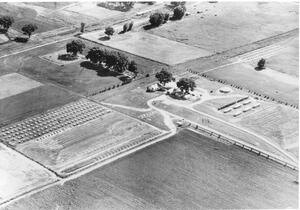
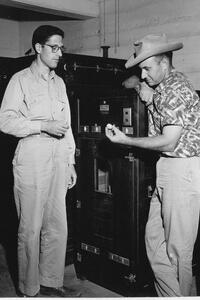
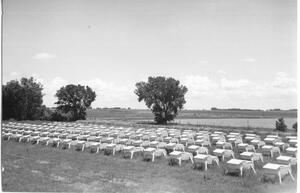
It was 1947 when the name sake, Byron Walker, took over the position of area manager. Byron looked out and saw an open prairie with minimal cover for wildlife, so he began planting trees by the tens of thousands. Walker would also raise 18,000-22,000 Northern Bobwhite quail each year and release them across the state as part of the forestry fish and game program. Once this began the wildlife area was known as the quail farm. However, studies beginning in the 1960's and continuing until today have well established that stocking has no effect on population. The state of Kansas ended its stocking program in the 1970's and therefore the quail raising on the Byron Walker Wildlife Area also ended.
Since 1992, Troy Smith, has held the position of wildlife area manager, and he has faced a different set of problems as his predecessor. Mainly the management of woody encroachment into the native grasslands. Smith combats this woody growth and improves habitat for upland birds by implementing a patch burn patch graze system. Under this management technique and many others, game bird populations have improved on the Byron Walker Wildlife Area. In his time as manager Smith has also added many marshes and ponds on the wildlife area increasing waterfowl habitat and hunting opportunities.
There have been small land acquisitions made over the years adding to the total acreage of the area. In 1965 a notable addition of ~2900 acres, previously known as the Sears' ranch, was completed and almost tripled the size of the wildlife area. In recent years there has been one large, and two smaller additions, 93 acres was purchased and added to the area in 2006. The other relatively small acquisition was made in 2014 and totaled 63 acres. This acreage was part of a land trade that happened when the improvement to US highway 54 occurred.
On October 5th, 2022 the Kansas Department of Wildlife and Parks (KDWP) closed on a 493 acre addition to Byron Walker Wildlife Area. This was a cooperative project between KDWP, Ducks Unlimited, Kansas legislators, the landowner, previous renters, and local government entities and citizens. The new property is a combination of cropland, riparian woodlands, mixed-grass prairie, and wetlands in the form of 1.2 miles of the South Fork of the Ninnescah River, approximately 1 mile of a branch of Mead Creek, and over ¼ mile of spring seep and beaver ponds. Croplands make up approximately 150 acres of this 493 acre tract and plans are to farm those acres to focus on pheasant production as well as deer, turkey, and waterfowl use. The riparian habitats are a mixture of both woodlands and grasslands. The woodlands are a mixture of cottonwood, willow, elm, locust, mulberry, walnut, and cedar. The grasslands are a local representative mix of big and little bluestem, indian grass, switch grass, side-oats gramma, purple top, eastern gamma-grass, and other species, generally in good condition other than the woody invasives that will need addressed. The topography shows significant drop from the upland crop acres to the river and spring.
The property adjoins the 4,685 acre Byron Walker Wildlife Area on its entire northern boundary and part of its eastern boundary, sharing approximately 2.25 miles of common border and increasing the area acreage to 5,178 acres. It is cut into two units by the Kansas/Oklahoma railroad. All of the cropland acres are located south of the railroad property. The river is located both north and south of the railroad. The Mead creek drainage is south of the railroad. As with all of Byron Walker Wildlife Area, you will need to pay close attention to the perimeter signs to see where the new addition ends and private property begins. We need to be good neighbors and respect those adjoining private properties.
Wildlife currently using this property include but are not limited to: white-tailed deer, turkey, bobwhite, ring-necked pheasant, dove, waterfowl (ducks and geese), beaver, muskrat, raccoon, coyote, bobcat, opossum, striped skunk, squirrel, cottontail, game fishes (Large-mouth Bass, Bluegill, Channel Catfish, Flathead Catfish, etc.), many non-game species as well as a number of endangered, threatened, or SINC species.
As of November 2023, the existing fence has been removed from the new property and has been replaced. Also, a tree cutting contractor is removing Siberian Elm, Honey Locust, Black Locust, Eastern Redcedar, Saltcedar, and Russion Olive trees from the area as they are invasive and will continue to spread, degrading the grasslands and timber quality. We also have plans for improving some of the wetlands on the area to provide more habitat and hunting space for waterfowl. Prescribed fire will be introduced to the grasslands once this drought has eased. We have initiated a four year crop rotation on the 150 (4 fields) acres of cropland that will be beneficial to upland birds, deer, turkey, and small game.
| Waterfowl numbers | variable |
| Water level | Kingman State Lake is still almost 14 inches low. All the marshes have picked up huntable water. The new headquarters marsh will not be intentionally flooded this fall. As of 1/13/25, all marshes and the lake are frozen up. |
| Hunting conditions | Limited open water other than the river.
|
| Expected hunting success | Fair. Coming cold fronts should bring in new migrants. |
| Comments |

